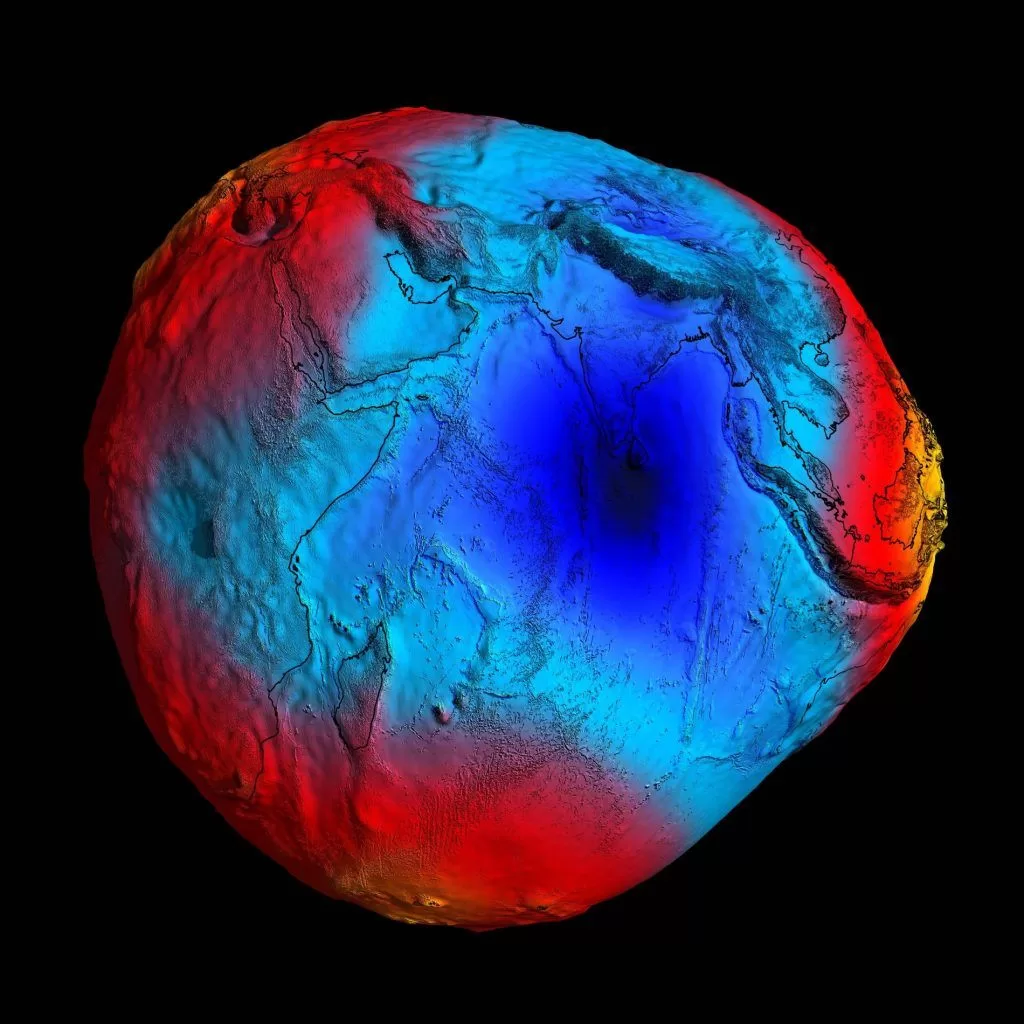The Indian Ocean is home to a giant “gravity hole” that is one of the most profound gravitational anomalies on Earth. This anomaly, known as the Indian Ocean Geoid Low (IOGL), spans an area of more than two million square miles and is located just south of Sri Lanka. The IOGL is caused by a lack of mass under the region, which results in a weaker gravitational pull. As a result, the sea level over the IOGL is about 100 meters lower than the global average.

Scientists have long been puzzled about the formation of the IOGL. However, a recent study by researchers from the Indian Institute of Science (IISc) has shed some light on the mystery. The study, which was published in the journal Geophysical Research Letters, suggests that the IOGL was formed by a combination of two factors: plumes of hot, low-density magma rising from the Earth’s mantle, and slabs of oceanic crust that have been subducted into the mantle.
The plumes of magma are thought to have been responsible for creating a low-density region in the mantle beneath the IOGL. This low-density region is less effective at attracting mass, which in turn leads to a weaker gravitational pull. The slabs of oceanic crust, on the other hand, are thought to have contributed to the IOGL by creating a region of high pressure in the mantle. This high pressure also makes it more difficult for mass to be attracted to the region, further weakening the gravitational pull.
The study by the IISc researchers is the first to provide a comprehensive explanation for the formation of the IOGL. The findings of the study could help scientists better understand the dynamics of the Earth’s mantle and the formation of other gravitational anomalies on Earth.
Here are some additional details about the IOGL:
- The IOGL was first discovered in 1948 by Dutch geophysicist Felix Andries Vening Meinesz.
- The IOGL is about 1,200 kilometers southwest of the southernmost tip of India.
- The sea level over the IOGL is about 100 meters lower than the global average.
- The IOGL is thought to have formed about 20 million years ago.
- The IOGL is still evolving, and its size and shape are likely to change over time.
The IOGL is a fascinating natural phenomenon that is still not fully understood. However, the study by the IISc researchers has shed some light on its formation, and the findings of the study could help scientists better understand the dynamics of the Earth’s mantle and the formation of other gravitational anomalies on Earth.

